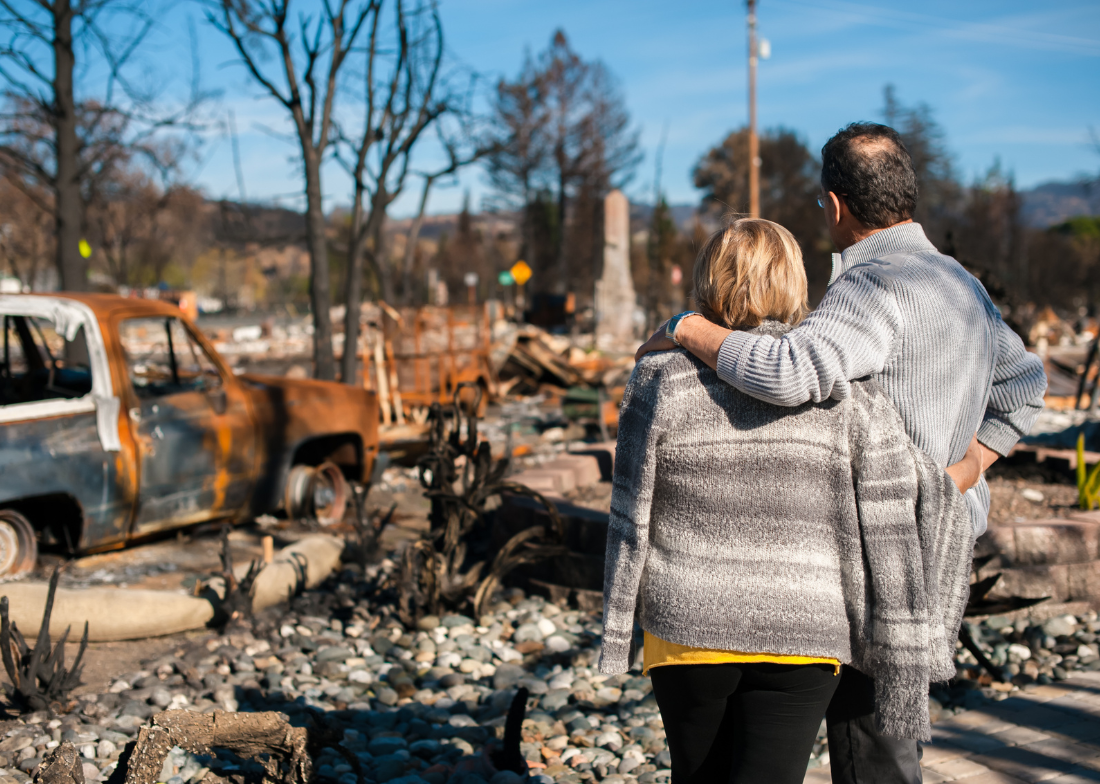Climate Misinformation on Social Media 101
Victoria Whalen, ACE Fellow
|May 13, 2022

As technology has advanced, social media has become the number one way to stay connected and to retrieve information. However, fossil fuel corporations and other climate denying agencies are continuing to use social media as platforms to spread misinformation about climate change. From Facebook to Tik Tok, climate misinformation is becoming so polarizing that often people are confused on what the truth really is.
What is Climate Misinformation?
Misinformation is the sharing of information that is false or incorrect and in this case, climate misinformation is the sharing of false or incorrect climate change information. This can be a slew of issues related to global warming, extreme weather events, green infrastructure, energy, etc. This shouldn’t be confused with disinformation which is when someone deliberately spreads misinformation with the intent to mislead. However, nowadays the difference between disinformation and misinformation is so miniscule that they are often used interchangeably.
Unfortunately, much of this false content is being spread through funding from the fossil fuel industry throughout various social media platforms. Social media platforms like Facebook, Instagram, Twitter, and TikTok are growing bigger everyday and so does their audience. This is what makes social media the perfect platform for staying connected with the world, engaging in discourse, and having a never ending stream of information.
Climate content on social media is often considered opinion-based and thus is often ignored or overlooked by fact-checking procedures. This has led to an influx of climate change deniers posting false information, myths, and lies about the ongoing climate crisis. Michael Khoo, the Co-Chair of the Climate Disinformation Coalition at Friends of the Earth, said, “America and the world need full data transparency of the ecosystem of disinformation, from climate to issues like race, gender, or public health.” Researchers from Stop Funding Heat have found that climate misinformation is viewed as often as 1.36 million times a day on Facebook.
Why Does it Matter?
Every myth, lie, and conspiracy about climate change that goes against known science and the lived experiences of others is another obstacle to overcome when fighting for equitable climate action and policies. Confusion, mistrust, and polarization are the exact strategies fossil fuel corporations are using in order to push the agenda that oil and gas are necessary to thrive, when in reality they just want to line their pockets. A recent analysis collected on Eco-Bot found that 16 of the world’s biggest polluters were responsible for placing more than 1,700 of climate misinformation ads on Facebook in 2021. As a whole, these ads garnered approximately 150 million impressions and have earned roughly $5 million for Facebook.
Another example of fossil fuel corporations spreading misinformation is ExxonMobil. Exxon paid for at least 350 advertisements where the purpose was to influence New York State legislators to not phase out natural gas in new buildings.
While ads are one thing, these corporations are using other tools to spread misinformation as well. This can be seen with a new corporate strategy of paying social media influencers on Instagram and TikTok. Often, these are inconspicuous micro videos of fun road trips with the influencer stopping at a popular gas station like Shell or BP and promoting their product. These videos often are tagged or sponsored by Big Oil and are becoming more prominent as microvideos grow more popular.
While fossil fuel corporations are one of the most well-known and fluent in the spread of misinformation, these strategies have a long and successful history. For example, these same strategies can be seen by taking a look at the success of the tobacco industry. For decades, the tobacco industry worked to suppress the information and impact of the various scientific studies that showed the link between smoking cigarettes and cancer. An executive stated in a 1969 memo from a major tobacco company that, “Doubt is our product, since it is the best means of competing with the ‘body of fact’ that exists in the minds of the general public. It is also the means of establishing a controversy.”

How Have Media Platforms Responded?
Even though there has been a shift in public opinion where more people believe and are worried about climate change, social media has been slow to adapt, and thus misinformation and disinformation have been left unchecked for far too long. However, some platforms have begun adapting changes and new policies to help curb the rate of misinformation that is available on social media.
Based on research done in 2020, Twitter had allowed nearly half a million climate change denial posts on their platform. However, on World Environment Day in June of 2021, Twitter added a ‘Climate Change Topic’ that users can follow in order to steer viewers towards more scientifically accurate sources from scientists, environmental activists, and environmental organizations.
In addition, they also altered their algorithm so that users would encounter credible information before they encountered misinformation. This has become a popular strategy known as “pre-bunking,” which is the process of debunking lies, tactics, or sources before they appear. This strategy actually stems from the inoculation theory that many scientists and healthcare specialists use when talking about vaccines. The idea is to get the person used to the new foregin material so that it can form antibodies, or in the case of climate misinformation, credible climate change facts.
Google / YouTube
In October of 2021, Google announced that YouTube would no longer allow creators to earn money from any content that “contradicts well-established scientific consensus around the existence and causes of climate change.” This applies to any content that refers to climate change as a hoax or myth, denies global warming trends, denies the causes and effects of greenhouse gas emissions, and more.
Facebook / Meta
Facebook is the world’s most popular social media platform and thus contains a shockingly large amount of climate misinformation. However, compared to other social media platforms, they are doing the worst to stop the spread. Facebook had previously announced that it would begin attaching warning labels to content and would direct readers to a “climate science information center” that contains accurate information.
Unfortunately, several reports show that Facebook has failed to label half of the posts promoting climate denial articles. Former Facebook employee and current whistleblower, Frances Haugen, has even stated that Facebook intentionally misled the public and investors when discussing their efforts to fight climate misinformation.
Ihran Ahmed, Chief Executive of the Center for Countering Digital Hate, stated, “By failing to do even the bare minimum to address the spread of climate denial information, Meta is exacerbating the climate crisis. Climate change denial—designed to fracture our resolve and impede meaningful action to mitigate climate change—flows unabated on Facebook and Instagram.
Lastly, arguably the most drastic solution to curbing climate misinformation is from Pinterest, who has banned any climate misinformation from posts and advertisements. This includes content that denies the existence or impacts of climate change, inaccurate posts about natural disasters and other extreme weather events, misrepresentations of scientific data through omission or cherry picking, or any denial that humans influence climate change.
Ways to Debunk Climate Misinformation
While it might seem like an impossible task because of the neverending flow of misinformation, there are several ways to help stop the spread of false information. Whether it be “pre-bunking” or reporting videos or posts, each way can help at least one person learn the truth about the climate crisis.
- Pre-bunking climate myths and lies
- Learn how to better spot fake videos and stories
- Don’t stigmatize inaccurate beliefs. This is more likely to alienate your audience.
- If able, translate complicated facts or information in ways that are easy to understand like quick charts, graphics, or other visual aids.
- Provide factual information and resources explaining the inaccuracies
- If you see something, say something!

Tell Meta to Kick Climate Deniers Off of Facebook and Instagram
It’s time for Meta CEO Mark Zuckerberg to put his money where his mouth is and kick climate deniers off Facebook and Instagram for good.
In 2021, Facebook and Instagram’s parent company, Meta, pledged to crack down on climate misinformation and committed to providing “access to climate science information” and finding “solutions that help create a healthier planet.” Despite these promises, Meta continues to let some of the biggest climate deniers—like PragerU—advertise on their platforms. By taking their money, Meta gives climate deniers a megaphone to push their fictitious agenda. The fate of our planet is being brushed aside to grow Meta’s bottom line.
Want to read more? Check out the ACE Blog.
Join our Youth Action Network
More Blog Posts
Driving India towards self sufficiency and freedom from oil
India can shield itself from oil-price shocks and global pressure over Russian barrels by leaning harder into two strengths it …
Read More
Unnatural, Not Unprecedented
For two weeks, residents of Southern California endured a waking nightmare. Parents raced against time – hurrying down the driveway …
Read MoreCrafting a Vision for the Future: My Experience at LCOY USA 2024
Dry and sunny Tempe, Arizona where temperatures have been over 100 F for 113 consecutive days, delegates gathered to attend …
Read More